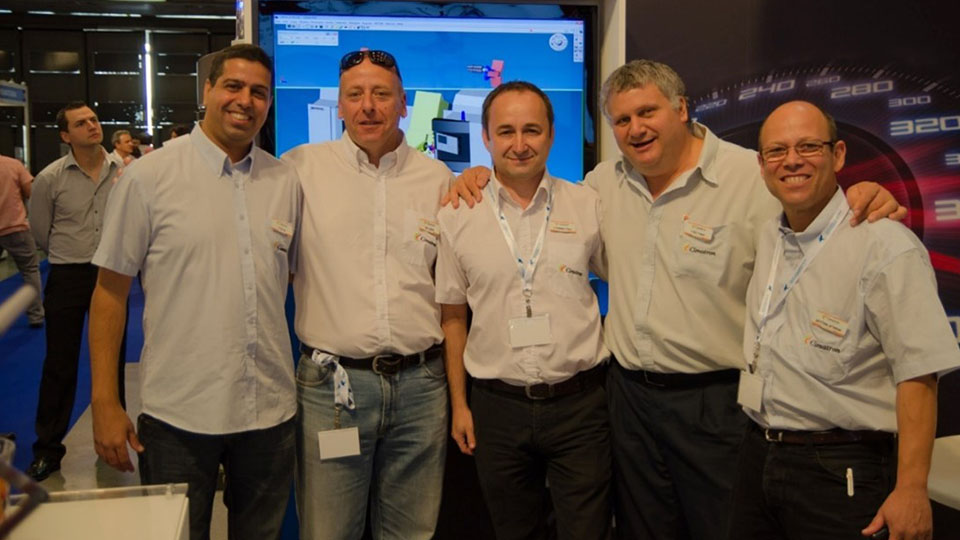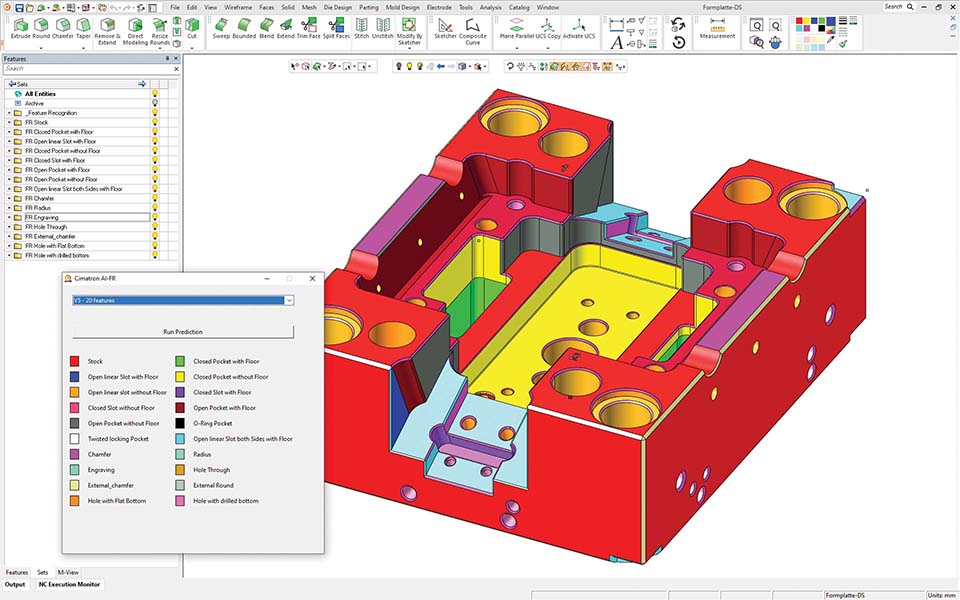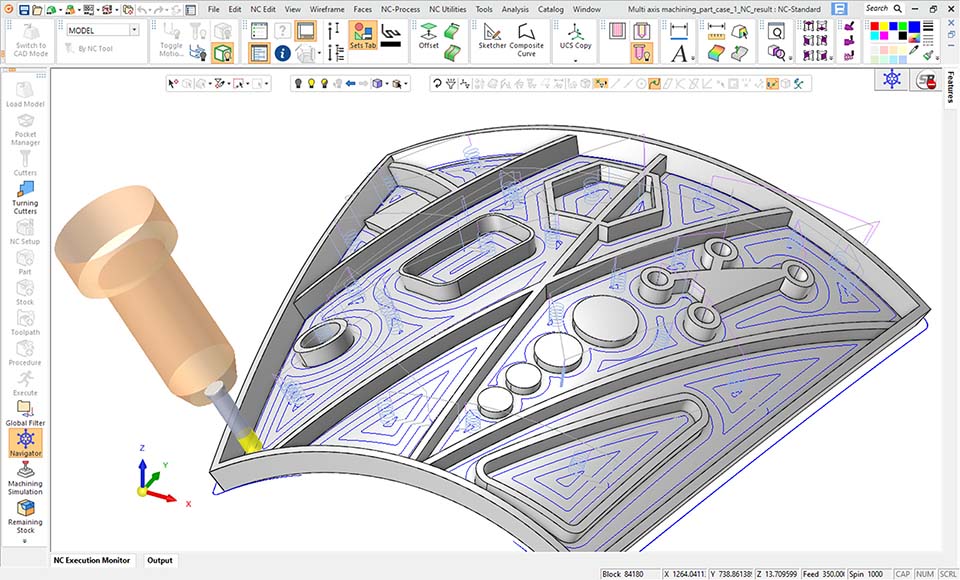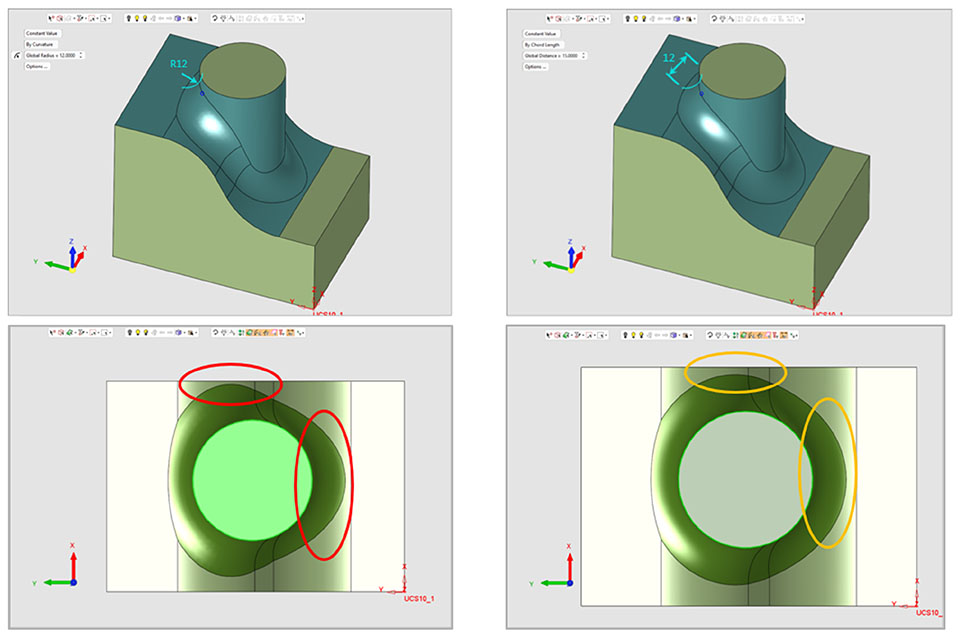Amir Lapid's vision comes true: Cimatron breaks new ground with AI innovations
In 2017, the late Amir Lapid, CEO of Cimatron Israel, published a visionary article titled "The Development of CAD/CAM Alongside the Advancement of Milling Machinery."
In it, he predicted the future development of both CAD/CAM software and CNC machinery, and how advancements made to each would influence advancement of the other. Lapid foresaw a future in which CAD software would support all types of machines and axes and the combination of CAD technology and artificial intelligence (AI) would transform the manufacturing industry.
As Cimatron leads the way today with AI innovations for CAD applications, Lapid’s vision has come to fruition.

Realizing the vision
With his article, Lapid detailed a future in which CAD software would support all types of machines and axes, ultimately driving a transformation in manufacturing.
Today, Cimatron 2025 offers advanced solutions for all types of machines and axes, including multi-axis machines, advanced spindles, and innovative processing technologies, integrating AI tools and improvements based on direct customer feedback.
Cimatron 2025 Innovations
Integration of AI Tools
Cimatron has fully integrated AI into its well-established CAD/CAM software and has focused on two main AI integration paths: informative and generative.
"We refer to the solution that provides information to users as ‘informative.’ An example is the Copilot AI," explains Ilan Melamed, product development manager at Cimatron.
"Now, users no longer need to browse technical documentation or user guides. They can simply ask a question, whether simple or complex: How do you use a function? What are the roles of the existing options required to perform a specific action in the system? The chatbot will answer," adds Guy Benveniste, PMO manager at Cimatron.
For generative solutions, AI tools enable direct interaction with the geometric model, extracting information using machine learning technology based on neural networks.

Recently, the company has been working on two primary functions:
1. Feature detection
This function identifies geometric elements such as pockets, grooves, fillets, and different types of holes (through, blind, etc.). The AI automatically detects these elements and provides manufacturing guidelines based on the recognized features. "Unlike geometric engines used today, a key advantage of AI is its ability to support new and complex geometries without requiring specific programming for each new geometry," explains Melamed.

2. Part classification
This function identifies the complex assemblies involved in mold construction, such as ejectors, screws, plates, and springs. "The AI engine can recognize what it sees: ejectors, screws, plates, springs, and more. Based on this recognition, the software can classify parts and even suggest additional manufacturing options while considering customer requirements, production capabilities, and existing machinery," Melamed elaborates.

Both functions are currently in the pilot stage and will be released to customers in 2025.
Multi-Axis and multi-spindle machine support
Cimatron 2025 introduces new X5 multi-axis processing functions that support cutting heads designed for circular segments (lens, barrel) with tilt control for tool axes and lead/lag settings defined by the user. The new procedures support rough machining, floor/wall finishing, and residual material processing.
The rough machining layer (including graded internal layers) can be defined using an offset from the floor surface, offset from the ceiling surface, and morph between ceiling and floor surfaces; tool orientation follows the normal direction of the floor surface. The remaining material calculation process remains consistent with the 2024 version and updates continuously.
The supported undercut conditions include: ‘do not machine,’ ‘machine,’ and ‘machine only.’ The residual material machining strategy after rough processing is based on the cutting tool from the previous procedure (flat, bull, or ball).
Enhancement in modeling process – round feature
In version 2025, users can define the size of a round feature by using a chord of specified length across the arc to control its size instead of entering a radius value.
Rounds with a fixed chord length remain tangent to adjacent faces and provide a more uniform shape in specific geometric areas, reducing stress formation — a preferred feature in mold design.
Lapid's legacy
Amir Lapid was a pioneer who predicted important developments in the manufacturing industry. His vision and expertise helped Cimatron become a leading provider of technologies for mold and die manufacturers, and his legacy guides the company’s ongoing commitment to developing innovative solutions.
Final words
Cimatron is dedicated to influencing the future of manufacturing by developing groundbreaking technologies and providing customers with the most advanced and innovative solutions. The company believes that a combination of human expertise and cutting-edge technology, including AI, will shape the continuous evolution of manufacturing and ensure a bright future.
Lapid was not just a manager; he was a visionary. He foresaw the future of manufacturing and led Cimatron with the determination and dedication needed to turn his vision into reality. His legacy is not only in the advanced technology that Cimatron develops, but in the culture of innovation and excellence he fostered.
Cimatron follows in Lapid’s footsteps by providing advanced technologies that help customers succeed and believes he would be proud to see the company continue to break new ground.

